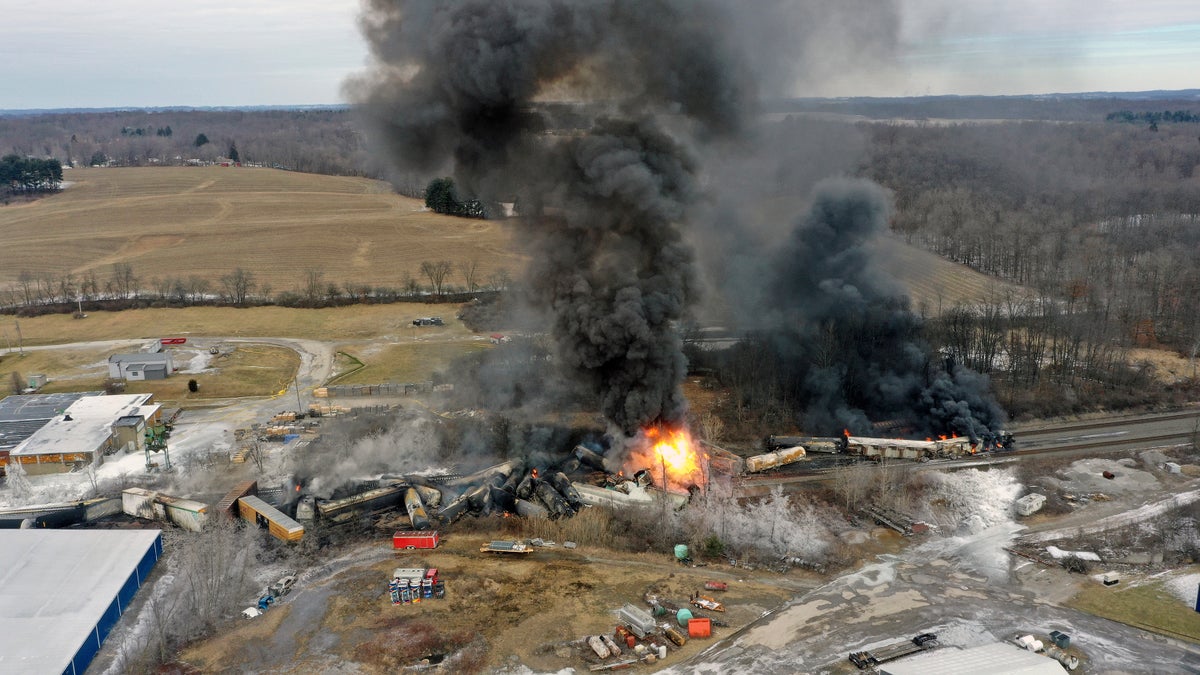
The Norfolk Southern train derailment in Ohio killed more than 43,700 animals within a five-mile area, according to a new official estimate.
East Palestine was thrown into chaos on the night of 3 February when a 150-car Norfolk Southern train carrying toxic chemicals and other materials suffered a catastrophic mechanical failure, hurtling the cars off the tracks.
More than three weeks later, information is still trickling out about what exactly happened and what risk the 5,000 residents of East Palestine – and the millions in the surrounding region – may face as a result of the crash.
According to the Ohio Department of Natural Resources (ODNR), an estimated 38,222 minnows were killed in the entire five-mile span of the waterway from the derailment site to the point where the Bull Creek flows in the north fork of Little Beaver Creek.
“It is estimated that a total of around 5,500 other species... things like small fish, crayfish, amphibians and macroinvertebrates, were also potentially killed as a result of the derailment,” said ODNR director, Mary Mertz.
Ms Mertz said ODNR Wildlife personnel collected data and specimens from four collection stations over two days, on 6 and 7 February.

“We had 2-3 officers monitoring that collection since it began,” she said. “Dead fish were collected in the four designated survey spots by entering the water and using a net.”
During that time, 2,938 dead aquatic animals were found, of which around 75 per cent were minnows, while the remaining 25 per cent included other small fish, crayfish, amphibians, and macroinvertebrates.
After receiving that final sample number of collected dead aquatic species, ODNR wildlife investigators next applied a science-based calculation endorsed by the American Fisheries Society to that number to determine the estimated total number of dead aquatic species, including those likely still in the water, said Ms Mertz.
The new calculation estimated “that a total of 38,222 minnows were potentially killed as a result of the derailment”, she said, adding that around 5,500 other aquatic species were potentially killed.
“The investigation has thus far concluded that of the seven-and-a-half-mile impacted area, the species were killed over a five-mile span,” Ms Mertz said, adding that officers searched beyond the impacted waterways, but have not observed any dead aquatic life.
ODNR also asserted that none of the species killed in the incident are “threatened or endangered”, adding that the organisation is monitoring and assessing the environmental impact.







